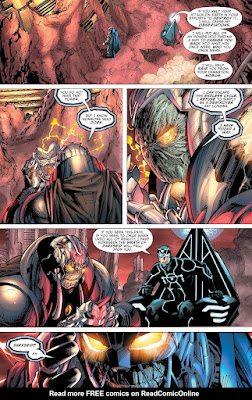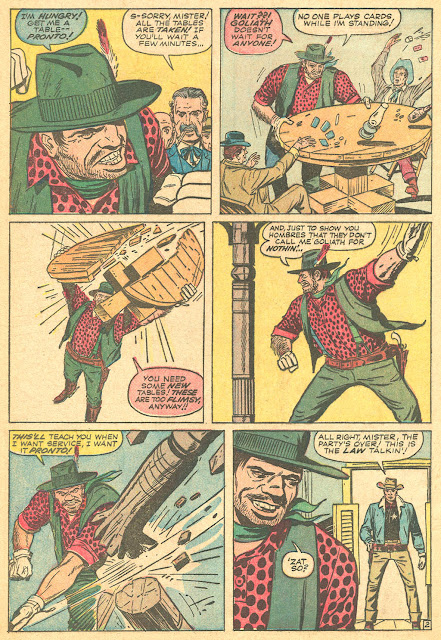In the thirty-something years since 1986’s CRISIS ON INFINITE EARTHS, DC Comics has published many similar multi-feature crossovers, few of which have possessed any mythic content. But the subject of this essay—henceforth WAR for short—not only achieves such symbolic amplitude but does so through some inventive riffing on many of the myth-tropes of CRISIS. (Note: I’m not reviewing here any tie-ins to this Justice League series.)
The purpose of the 1986 CRISIS was not purely artistic, for its purpose was to merge the many parallel worlds of the diverse DC universe into one cosmos, patently emulating the successful business model of Marvel Comics. As I observed in my CRISIS review, the authors did so by interweaving two loosely related concepts from DC’s Silver Age. The first was the idea of parallel Earths in which the archetypes of DC heroes took on somewhat different configurations—a Flash named Jay Garrick on one Earth but named Barry Allen on another, or a world where all the characters who were heroes in the Justice League became instead a group of criminals called “the Crime Syndicate.” The second was the notion of universes that were made either of “positive matter” or of “negative anti-matter.” The Earths of the Justice League and all their congeners fit into the positive universe, while the negative universe was represented only by the irredeemably warped world of Qward. In CRISIS, the positive universe gave birth to a protective super-being, the Monitor, while the negative continuum spawned the Anti-Monitor, an entity obsessed with annihilating all other realities (and thus serving the purpose of the authors). It’s interesting that DC’s way of getting rid of all the unmanageable doppelgangers from their company’s long history was to spawn a pair of cosmic twins, though both are dead by the end of the series like the other troublesome duplicates. The authors also threw in at least one other new doppelganger: a good version of Lex Luthor, who also gives rise to a son, Alexander Junior, who took on something of a “secular savior” role by story’s end. In addition, the reordering of the DC cosmos gave the company the chance to debut brand new versions of Superman, Wonder Woman and others.
WAR was not such a reboot, but it followed in the wake of a 2011 crossover event in which the DC cosmos was once more re-arranged, this time to allow for the return of many of the alternate worlds, including (most prominently) that of the “Crime Syndicate” Earth. During that reboot, familiar franchises were once more rebooted, but only two are relevant to the WAR storyline. First, Wonder Woman no longer enjoyed an immaculate conception via clay statue, but became the offspring of the deity Zeus with Amazon mother Hippolyta. Second, Cyborg’s artificial body, originally the invention of the hero’s scientist-father, became interfused with the technology of the New Gods from the classic Jack Kirby series. Both the good and bad gods of that franchise—respectively from the worlds of New Genesis and of Apokolips—sat out the events of 1986’s CRISIS. In contrast, the new origin for Cyborg insured that the revised 2011 Justice League would be strongly linked to the New Gods sub-cosmos. To be sure, the New Genesis gods barely figure into WAR, except that one of their kindred becomes the hero Mister Miracle. In WAR most of the authorial attention goes to the mythos of Apokolips, to whose activities Cyborg becomes attuned. Aside from the modifications to Wonder Woman and Cyborg, the rest of the starring characters—Superman, Batman, the Flash, the Hal Jordan Green Lantern, Shazam, and Lex Luthor—are broadly recognizable. The newbie in their ranks is one Jessica Cruz, who bears a complicated relationship to the evil Green Lantern from the Crime Syndicate cosmos, which I’ll forbear to discuss here.
Johns wastes no time in doubling down, so to speak, on the presence of doppelgangers. A flashback reveals that on the night that Hippolyta birthed Princess Diana on the island Themiscyra, another Amazon, Myrina, produced yet another female child, but her father was Darkseid, more or less the obverse of Zeus’s role in the Wonder Woman cosmos. Myrina names her child Grail, referencing the mystic Celtic vessel that restores life, because the Amazon mother believes that Grail will save the universe from the evil of Darkseid. (This idea may owe something to the mythology of Achilles, a child whom oracles claimed would overthrow his father— which prophecy restrained the usually randy Zeus from having sex with Achilles’ mother.)
Just as Grail is deeply implicated in the New Gods mythos, so too is the new version of the Anti-Monitor. In Kirby’s original series, he includes the character Metron, a relentless quester after knowledge, who moves about the cosmos in his “Mobius Chair.” Kirby never implied that anyone but Metron constructed the miraculous mobile throne. In Johns’ world, Mobius is the mortal inventor of the chair, as well as an inhabitant of the Qwardian anti-matter universe. In addition to gifting Metron with the chair, Mobius duplicates the function of the Guardian Krona in CRISIS, being a man obsessed with peering into forbidden secrets. As the result of Mobius’ prying, he beholds the “anti-life equation”—another NEW GODS concept, now tied to the “anti-matter universe”—and is thus transformed into the Anti-Monitor. Some story extrinsic to WAR causes the newborn fiend to annihilate the Crime Syndicate world, and this will eventually lead to the surviving super-criminals of that world making common cause with the Justice League. However, in the early chapters the cosmic colossus doesn’t immediately rush out looking for new worlds to destroy. Grail is the agent who calls him into conflict with both the Justice League and with Darkseid, the father whom Grail wants to murder.
To make things even more complicated, throughout the story most of the heroes undergo assorted transformations into god-like beings—a tacit response to the many superhero fans (like me) who view superheroes as recapitulations of archaic myth-figures. Some transformations are merely functional in nature. Batman becomes bonded to the Mobius Chair because Johns needs one of the good guys to tap into the chair’s ability to endow the sitter with copious knowledge. More promisingly, the Flash becomes bonded to the Black Racer, Kirby’s “New God of death,” which plays into the fact that Flash is one of the heroes who dies during CRISIS. Johns’ best scripting deals with the quarrelsome team of Superman and Lex Luthor, who get teleported to Apokolips and have to work together, but not with very positive results.
On top of all that, the main subplot with the Crime Syndicate, out to avenge themselves on the Anti-Monitor, involves their one female member giving birth to a sort of anti-savior. Said female, Superwoman, is an alternate-world mashup of both Wonder Woman and Lois Lane, and the father of her demon-kid is a nasty version of Alexander Luthor, who was a good guy in CRISIS.
Whew.
I’ll forbear to discuss the very involved denouement here. I’ve long been aware that Geoff Johns knows his DC history inside and out, but this is the first time I’ve been strongly impressed by his artful repourings of old wine into new bottles. Not everything works, of course. Near the beginning Johns tosses in references to Brainiac and to Aquaman that may relate to some extrinsic stories, but which have nothing to do with WAR. Also, the deific names Johns gives to the transformed characters are lame. Shazam becomes “the God of Gods”—why exactly?
But I do like other playful recastings of continuity points. Luthor, abandoned on Apokolips by an evil-ized Superman, is taken in by a group of anti-Darkseid rebels, and they’re led by a woman named Ardora. In the Silver Age this was the name of an alien woman who fell in love with Luthor, and it’s through contact with the new Ardora that Luthor usurps the destiny of his enemy Superman and becomes the potential savior of Apokolips. Johns even has the Crime Syndicate version of Superman mention a woman named Luma Lynai, who in the Silver Age was a potential lover for Superman, for all that she looked like an age-appropriate version of Supergirl, as well as not being in any way related to the Man of Steel.
I freely admit that only a continuity-hound would get much mythic impact out of this highly referential opus. But for those so invested, the game is definitely worth the candle.






























